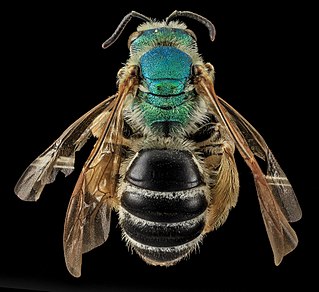 W
WAgapostemon coloradinus, the Colorado striped-sweat bee, is a species of sweat bee in the family Halictidae.
 W
WAmeles taurica is a species of praying mantis found in Ukraine.
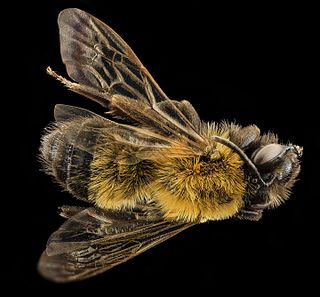 W
WThe Milwaukee miner bee is a species of miner bee in the family Andrenidae. Another common name for this species is the Milwaukee andrena. It is found in North America.
 W
WAndrena semilaevis is a Palearctic species of mining bee.
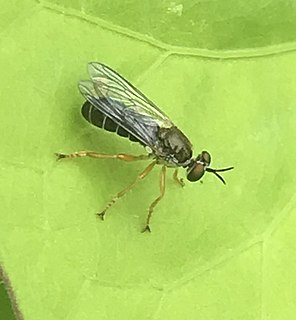 W
WAtomosia sayii is a species of robber flies in the family Asilidae.
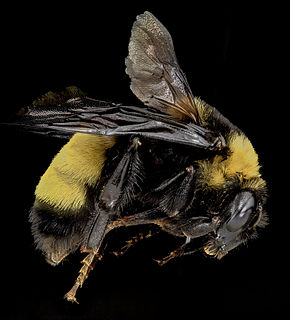 W
WBombus auricomus is a species of bumblebee known by the common name black and gold bumblebee. It is native to eastern North America, including Ontario and Saskatchewan in Canada and much of the eastern United States, as far west as the Great Plains.
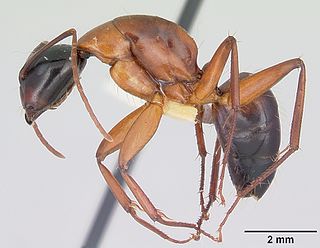 W
WCamponotus texanus is a species of ant in the family Formicidae.
 W
WCamptoprosopella dolorosa is a species of fly in the family Lauxaniidae.
 W
WCeratophyllus rusticus is a species of flea in the family Ceratophyllidae. It was described by Wagner in 1903.
 W
WCoenosia attenuata, commonly called "hunter fly" or well known under the name "killer fly", is a predatory fly belonging to the family Muscidae.
 W
WDiapheromera arizonensis, the Arizona walkingstick, is a species of walkingstick in the family Diapheromeridae. It is found in North America.
 W
WEctopsocus californicus is a species of outer barklouse in the family Ectopsocidae. It is found in Australia, Central America, and North America.
 W
WEnallagma daeckii, the attenuated bluet, is a species of narrow-winged damselfly in the family Coenagrionidae. It is found in North America.
 W
WEublaberus distanti, known as the six-spotted, four-spotted, four-spot, or Trinidad bat-cave roach or cockroach, is a primarily cave-dwelling Central and South American cockroach of the genus Eublaberus.
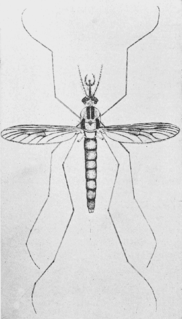 W
WEucorethra underwoodi is a species of phantom midges.
 W
WEusynthemis is a genus of dragonflies in the family Synthemistidae. They are commonly known as tigertails. Species of this genus are found mostly in Australia with one species, Eusynthemis frontalis, found in the Solomon Islands.
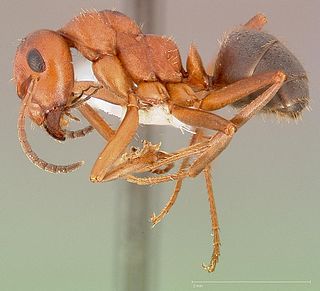 W
WFormica densiventris is a species of ant in the family Formicidae.
 W
WFormica neogagates is a species of ant in the family Formicidae. Found throughout North America and Canada, introduced in Europe, France.
 W
WFormica oreas is a species of ant in the family Formicidae.
 W
WHalictus hotoni, the emerald furrow bee, is a species of sweat bee in the family Halictidae native to southern Africa and introduced to Australia. It was described by Joseph Vachal in 1903.
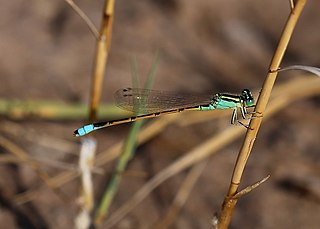 W
WIschnura barberi, the desert forktail, is a species of narrow-winged damselfly in the family Coenagrionidae. It is found in North America.
 W
WLasioglossum cupromicans is a Palearctic species of sweat bee.
 W
WLasioglossum fratellum is a Palearctic species of sweat bee.
 W
WLasius subumbratus is a species of ant in the family Formicidae.
 W
WMegachile campanulae, known as the bellflower resin bee, is a species of bee in the family Megachilidae. Described in 1903, these solitary bees are native to eastern North America. Studies in 2013 placed them among the first insect species to use synthetic materials for making nests. They are considered mason bees, which is a common descriptor of bees in several families, including Megachilidae. Within the genus Megachile, frequently also referred to as leafcutter bees, M. campanulae is a member of the subgenus Chelostomoides, which do not construct nests from cut leaves, but rather from plant resins and other materials. Females lay eggs in nests constructed with individual cell compartments for each egg. Once hatched, the eggs progress through larval stages and subsequently will overwinter as pupae. The bees are susceptible to parasitism from several other bee species, which act as brood parasites. They are medium-sized bees and the female adults are typically larger than the males. They are important pollinators of numerous native plant species throughout their range.
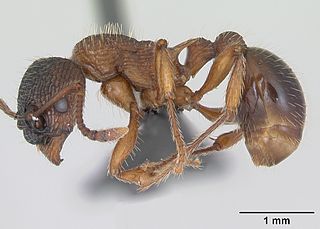 W
WMyrmica schencki is a species of ant in the genus Myrmica.
 W
WNemotelus kansensis is a species of soldier fly in the family Stratiomyidae.
 W
WNeohermes concolor is a species of fishfly in the family Corydalidae. It is found in North America.
 W
WNeophylax fuscus is a species of caddisfly in the family Thremmatidae. It is found in North America.
 W
WNomada sphaerogaster is a rare species of nomad bee in the family Apidae. It is found in North America.
 W
WNomada vegana is a species of nomad bee in the family Apidae. It is found in Central America and North America.
 W
WThe Oriental rat flea, also known as the tropical rat flea, is a parasite of rodents, primarily of the genus Rattus, and is a primary vector for bubonic plague and murine typhus. This occurs when a flea that has fed on an infected rodent bites a human, although this flea can live on any warm blooded mammal.
 W
WParaphlepsius collitus is a species of leafhopper in the family Cicadellidae.
 W
WThe petaltails of the family Petaluridae are apparently the most ancient of the extant true dragonflies, having fossil members from as early as the Jurassic.
 W
WPheidole inquilina is a species of ant in the genus Pheidole. It is endemic to the United States.
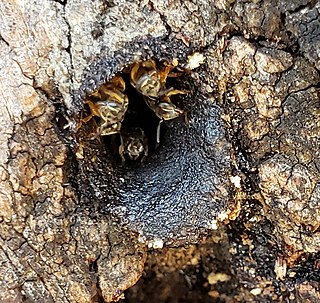 W
WPlebeia droryana is a species of stingless bee that is in the family Apidae and tribe Meliponini. Bees of the species are normally found in a few states in southern Brazil and their nests can be found in tree cavities. Depending on the region, P. remota may have a different morphology and exhibit different behaviors. The bee's diet consists of nectar and pollen that are collected intensely from a few sources. Researchers have conducted a multitude of studies analyzing the changes that occur in the colony during reproductive diapause and what happens during the Provisioning and Oviposition Process or POP.
 W
WPlebeia remota is a species of stingless bee that is in the family Apidae and tribe Meliponini. Bees of the species are normally found in a few states in southern Brazil and their nests can be found in tree cavities. Depending on the region, P. remota may have a different morphology and exhibit different behaviors. The bee's diet consists of nectar and pollen that are collected intensely from a few sources. Researchers have conducted a multitude of studies analyzing the changes that occur in the colony during reproductive diapause and what happens during the provisioning and oviposition process or POP.
 W
WProtoneura cara, the orange-striped threadtail, is a species of narrow-winged damselfly in the family Coenagrionidae. It is found in Central America and North America.
 W
WPtilothrix relata is a species of chimney bee in the family Apidae. It is found in South America.
 W
WSomatochlora provocans, the treetop emerald, is a species of emerald dragonfly in the family Corduliidae. It is found in North America.
 W
WSphex nudus, the katydid wasp, is a species of thread-waisted wasp in the family Sphecidae.
 W
WStenamma schmitti is a species of ant in the family Formicidae.
 W
WSympherobius barberi, or Barber's brown lacewing, is a species of brown lacewing in the family Hemerobiidae. It is found in Europe & Northern Asia, Central America, North America, Oceania, and South America.
 W
WTrachymyrmex turrifex, the fungus farming ant, is a species of higher myrmicine in the family Formicidae.
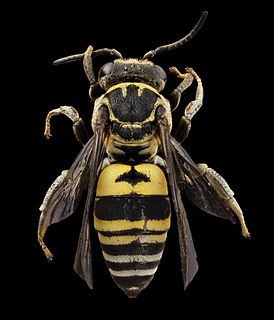 W
WTriepeolus simplex, the cuckoo bee, is a species of cuckoo bee in the family Apidae. It is found in North America.